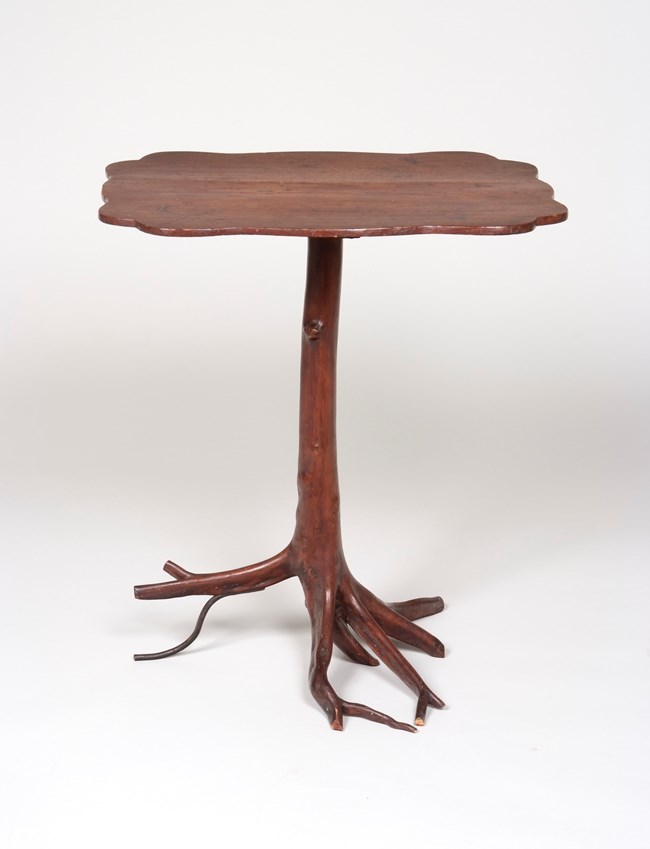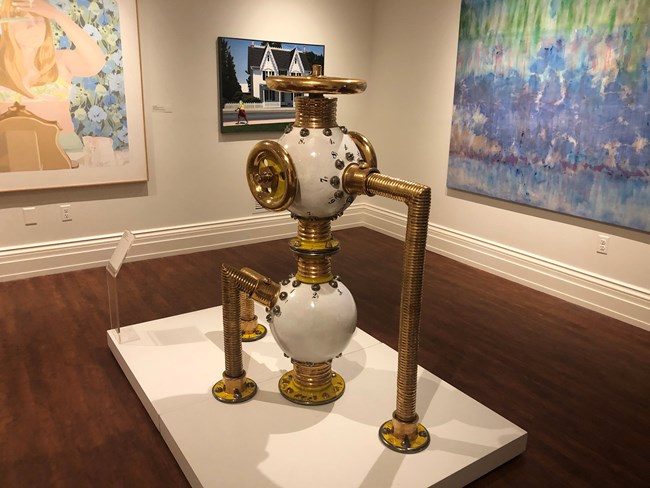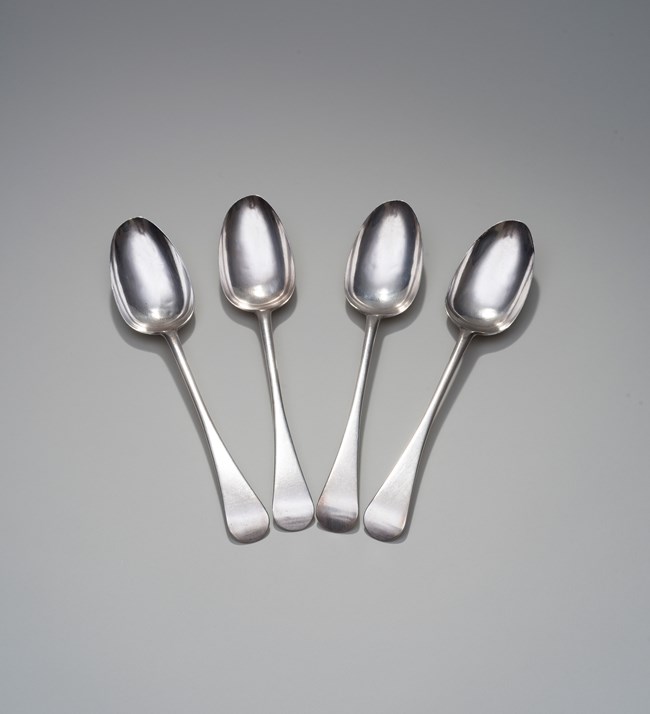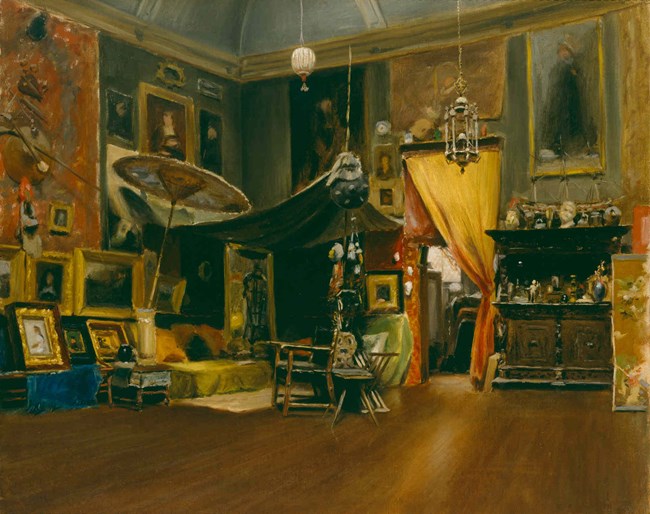
LEARN.Have you ever wondered about the stories behind everyday objects? Have you stopped to consider what impression the objects in your home give visitors? Why do we keep some objects year after year and give away others? Join the Biggs Museum of American Art to learn the hidden stories of some household objects from the museum’s collection and learn why they are important. Materials Needed:
Instructions:STEP 1: Review the vocabulary terms below.
STEP 2: Look at the photos and read their descriptive text to learn about these everyday art objects. Vocabulary:A person who acts as a guide at a museum or gallery.
The practice of creating objects that are both visually pleasing and useful in everyday life such as a chair, dresser, mirror, silverware, toys, etc.
How the materials that make an object (wood, fabric, plastic, metal, etc.) help us understand how the object was used or why it was created.
A farmer who rents farmland by giving a portion of their crop to the landowner as rent.
Someone who created objects out of silver.
An artist, typically a painter in the late 1800s, who created art with fast brush strokes that capture an “impression” (movement, light, and color) of a moment.

Biggs Museum of American Art Big Tom Burton- Tea TableCreator: “Big Tom” Burton About this item: “Big Tom” Burton was an African American sharecropper, and believed to have been formerly enslaved, who worked on the Burton Plantation in southern Sussex County, Delaware. Until the Thirteenthth Amendment abolished slavery in 1865, the plantation’s owner, Benjamin Burton, was the largest slaveholder in the state.This table was created by taking a pre-existing walnut tabletop created during the 1700s and joining it to a swamp-root base. This table is a rare example of furniture created by, and credited to, an African American in Delaware. Take a closer look! What signs of everyday use can you see on the table? 

Left image
Right image

Biggs Museum of American Art Machine III, ca. 1969Creator: Victor Spinski (1940-2013) About this item: Victor Spinski was a professor of fine arts at the University of Delaware. He specialized in making ceramic sculptures that are illusions. His ceramic objects were shaped as beer boxes, paint cans, trash cans, overturned coffee cups and even large-scale valves like Machine III, in these photos. Standing over four feet tall, this industrial-looking object is made entirely of glazed ceramics and is completely non-functional. Take a Closer Look! 

Left image
Right image

Biggs Museum of American Art Four tablespoons, 1760sCreator: Duncan Beard Take a Closer Look! 

Left image
Right image

Biggs Museum of American Art 10th Street Studio of William Merritt ChaseCreator: Reynolds Beal (1867–1951) About this item: William Merritt Chase was an American Impressionist artist and teacher. He was famous for his paintings of portraits (people). He traveled all over creating artwork, some of the places he traveled were: New York City, New York; St. Louis, Missouri; The Academy of Fine Arts in Munich, Germany; and Venice, Italy. Chase finally returned to New York City where he had a studio at the famous 10th street studio building pictured here. The 10th street studio building, completed in 1857, was the first multiple-artist studio built in the United States of America. The building had 25 studios around a central courtyard with a glass ceiling. Before the 10th street studio building changed how artists lived, worked and sold their art, most artists lived and worked out of what were called “studio homes.” These studios were dark, cold, and lacked proper airflow. Not a place to have guests. The painting here depicts William Merritt Chases’ 10th Street Studio and was painted by Reynolds Beal who learned from Chase in the late 1890s. In this painting we can see that this separate studio building tried to recreate the studio-home environment with a lot of light, open spaces for entertaining, and is filled with Chase’s interesting objects that inspire his artwork that we can see hanging on the walls. Take a Closer Look! 

Left image
Right image
DO.With your newfound perspective on how everyday objects could be works of art, you will now explore your own home to create a mini-museum exhibition of your own! Instructions:STEP 1: Choose three items from your home to create your own mini museum exhibition.
REFLECT.Choose two of the questions below to answer.
|
Last updated: July 14, 2021
